
views
Examining the Food’s Appearance
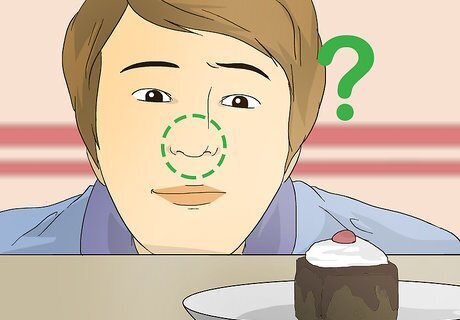
Look at the food to determine the color. Examine the food with your eyes. If it is in a test container, remove it so you can get a better look at the color. Write down what color you perceive the food to be. It can be helpful to note if the color is light or intense and whether the color seems pure or muddy. Note if the color is consistent throughout or not. Note if any liquids are transparent or not.

Feel the food with your fingers to note the texture. Remove the food from the test container. Touch it to see if it is mushy, grainy, crumbly or another texture. Write down any notes about the texture and free associate if you like. If the food is solid, touch to see if the surface is smooth or rough. For example, a coarse sugar might remind you of sand.
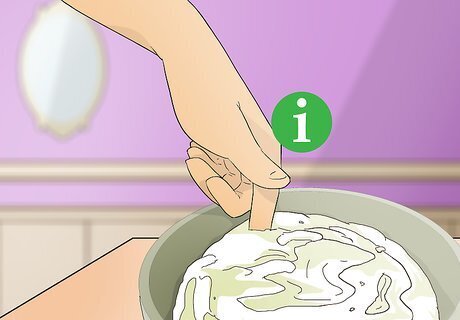
Work the food with your fingers to note any sound. Press a bit of the food between your fingers. Listen for any crackling or crunching. If the food is something like a cereal with many small bits, listen to hear if the pieces make noise as they brush past one another in the container. Make notes to catalog your thoughts.

Look at the packaging to see if it suits the food. Inspect the food’s packaging with your eyes and hands. Notice if the packaging holds the food well or makes it easier to eat. Fonts and instructions may also be worthy of comment. Write down any notes about the food’s packaging, whether about its usefulness or the way it looks. If the packaging has any important parts that enable you to eat the food, do they work? For example, if the food item is a juice box, does the diameter of the straw fit in the hole that is cut for it?
Tasting the Food
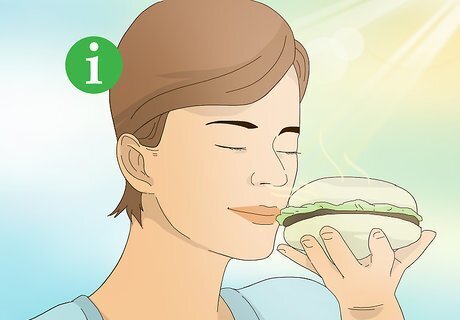
Smell the food to note the aroma. Hold your nose to the edge of the test container and inhale deeply. Take note of any scents or aromas you smell. Be creative and write down any associations. You might smell flavorings or ingredients that are a part of the food you’re smelling. The smell might also trigger a memory. For example, a cereal may smell of corn if that is an ingredient. Alternatively, a chocolate chip cookie might smell not only of vanilla but also remind you of your grandma’s house. If you’re having trouble smelling the food, break it up a bit with your fingers.

Taste the food to determine the texture. Take a bite of the food and feel its texture as you chew it. Notice if the texture of the food when you’re eating it feels different than when you touched it. Make notes not only about the food’s physical texture but also how you feel eating the food, if it is comforting, for example. You might consider if it crunches between your teeth or dissolves, for example. It can be helpful to think of texture, soft to hard, on a scale of 1-10. A numerical system can help if you are comparing different samples. Observe whether the food’s texture makes the food easy to swallow and eat or if the texture leaves your mouth dry.

Taste the food to experience the flavor. Take another bite, and move the food over your tongue. Certain areas of your tongue are most attuned to sweet, while others are more attuned to salt or sour, so this will help you experience all the flavors this food offers. Note if the food tastes the way it smelled, or different. Write down your impressions of the food’s taste, not just good or bad, but at least five phrases that would help you characterize it if you were trying to remember it in the future. Rate the sweetness, savoriness, sourness, and spiciness of the food. If you like, you can do so on a scale of 1-10. When tasting a food, it can be helpful to think about what’s pleasing about it and what you would change about it. Note the aftertaste, if any. For example, when tasting certain lasagna, you might note that it tastes like fresh tomatoes, pecorino cheese and too much oregano. Maybe it reminds you of a bad lasagna you had in a frozen dinner once because it has some sweetness you do not like (5/10). You could also note it is not spicy and not sour. The lasagna is dry and could use more tomato sauce.
Creating an Ideal Tasting Environment

Hold the test in a quiet, smell-free area. In order to get the clearest impression of a food, hold your sensory evaluation in a quiet and smell-free spot. Other smells in the area may change the way a food tastes to you. A calm, clean space will help you focus on the food sample at hand. Your sense of taste and smell is sharpest in the morning before eating other foods. This may be a good time of day to hold an evaluation.
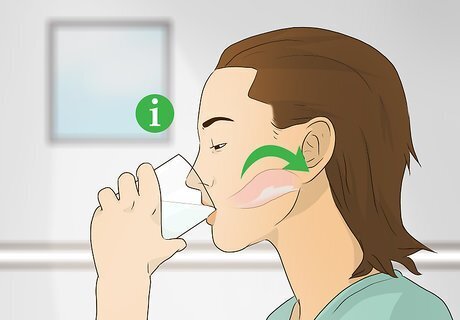
Set out water to cleanse your palate. Have some sips of water while tasting, especially if you’ll be trying multiple samples. This will ensure the smell and taste of one food doesn’t mess up the next one. Drink a few sips between different foods to cleanse your palate. If your food sample is oily, crunching on a cleansing food, such as raw carrots, before sipping water can cleanse your palate of some residual fats.
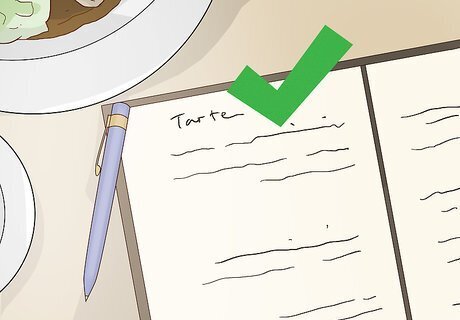
Record impressions as you go to keep different foods straight. Set out a notepad so you can write down your impressions of each dish as you taste. Especially if you taste multiple foods, it can be difficult to record your thoughts after the fact when each food might blend with the next. Take lots of notes as you taste to record your thoughts most accurately.

Use a preference test if you want to determine likability. Preference tests are used to determine whether you like or dislike a food product. An example of a preference test would be if you enjoy the taste of a particular muffin or not. Letting your testers know that likability is most important will allow them to focus on that their notes. For example, if you are giving direction to other testers, you might say at the beginning of the test, “Today, I want to find out if you like this blueberry muffin or not.”

Use a discrimination test if you want feedback on a product attribute. Discrimination tests are used to judge a preference about one part of a product, such as the color. An example of a discrimination test could be a marketing study about whether you prefer green mint chip ice cream or white. By telling your testers what characteristic of the food you want feedback on, they can tailor their notes accordingly. For example, if you are giving direction to other testers, you might say at the beginning of the test, “Today, we want to find out which color of ice cream you like best.”
















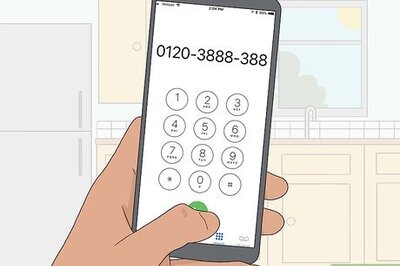

Comments
0 comment